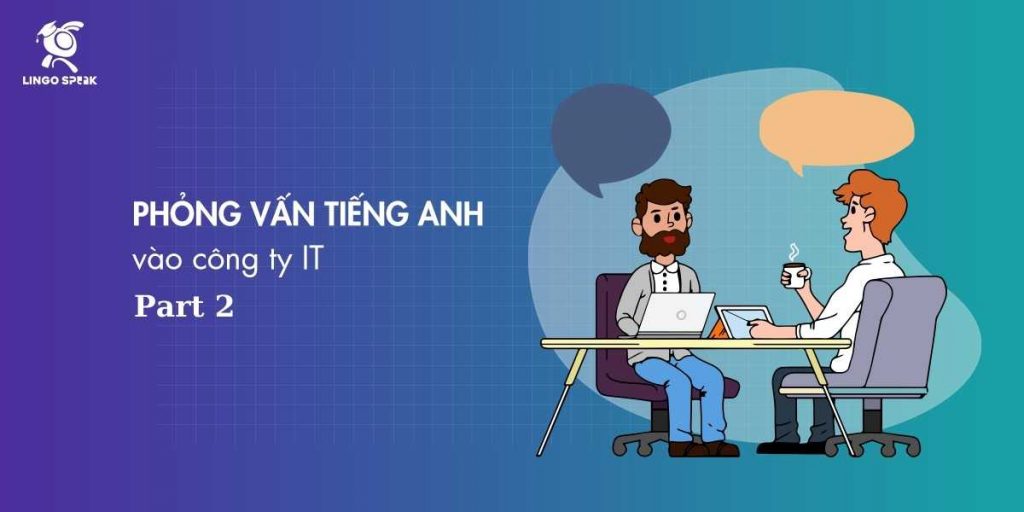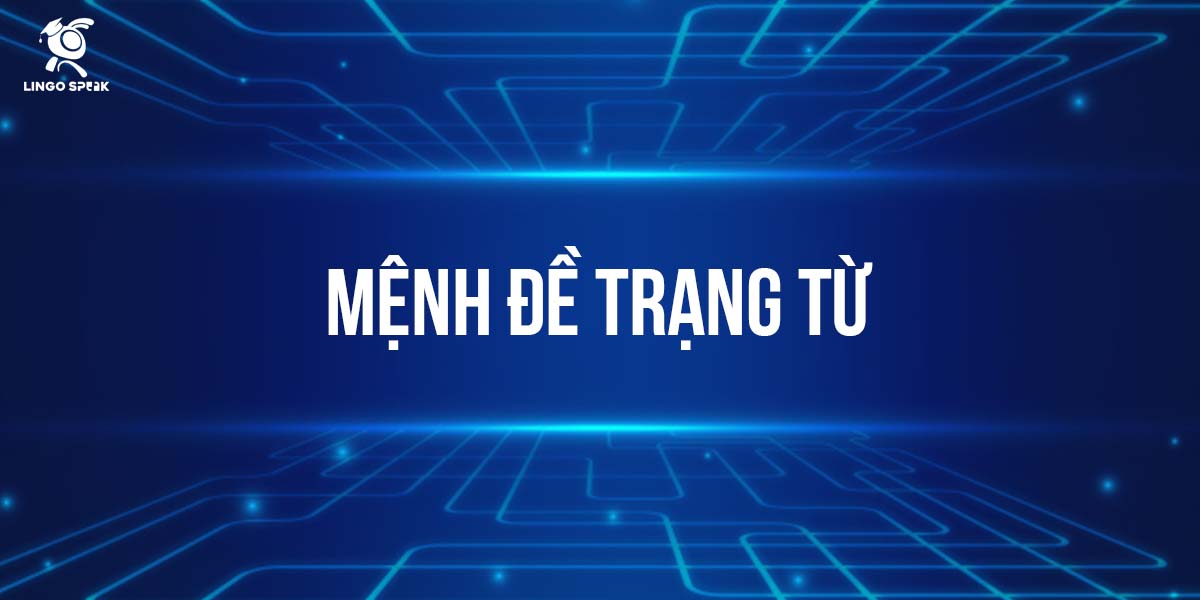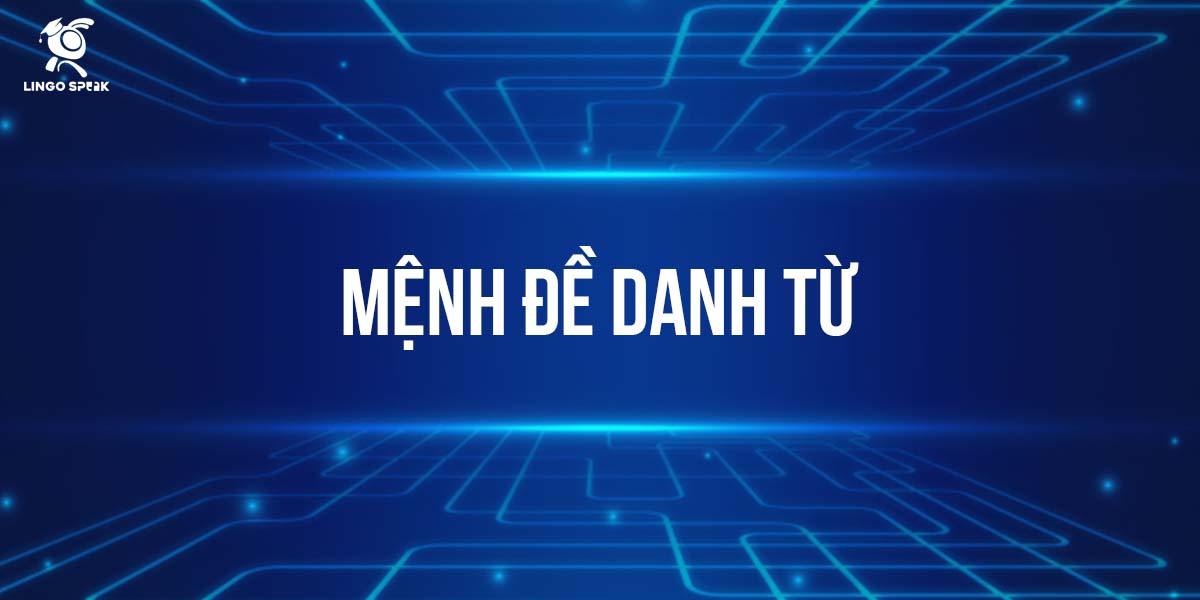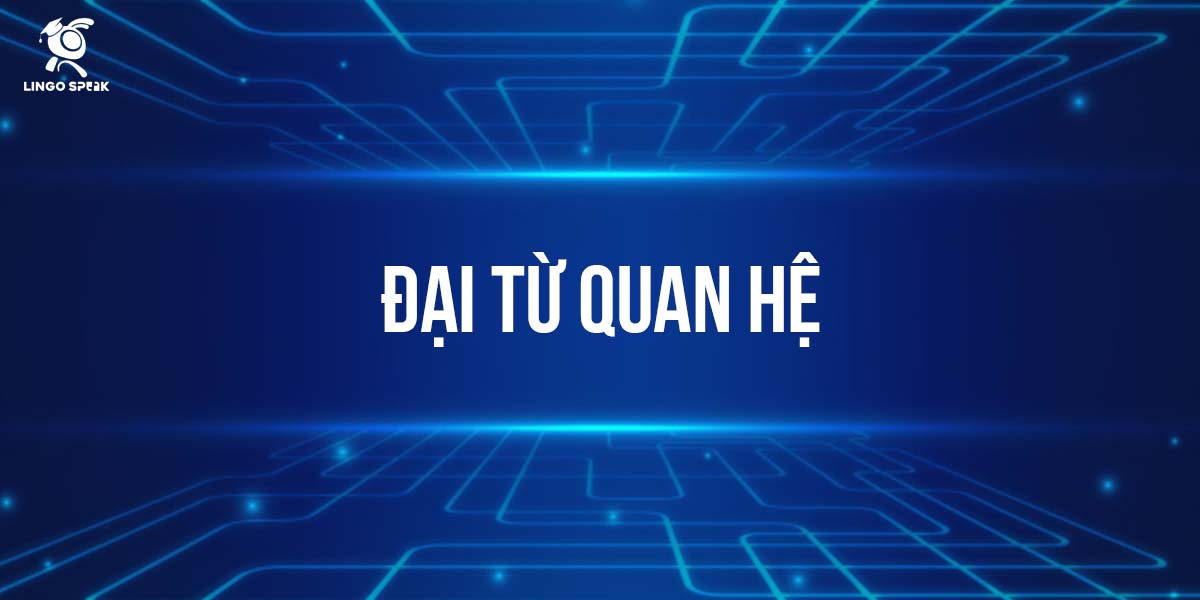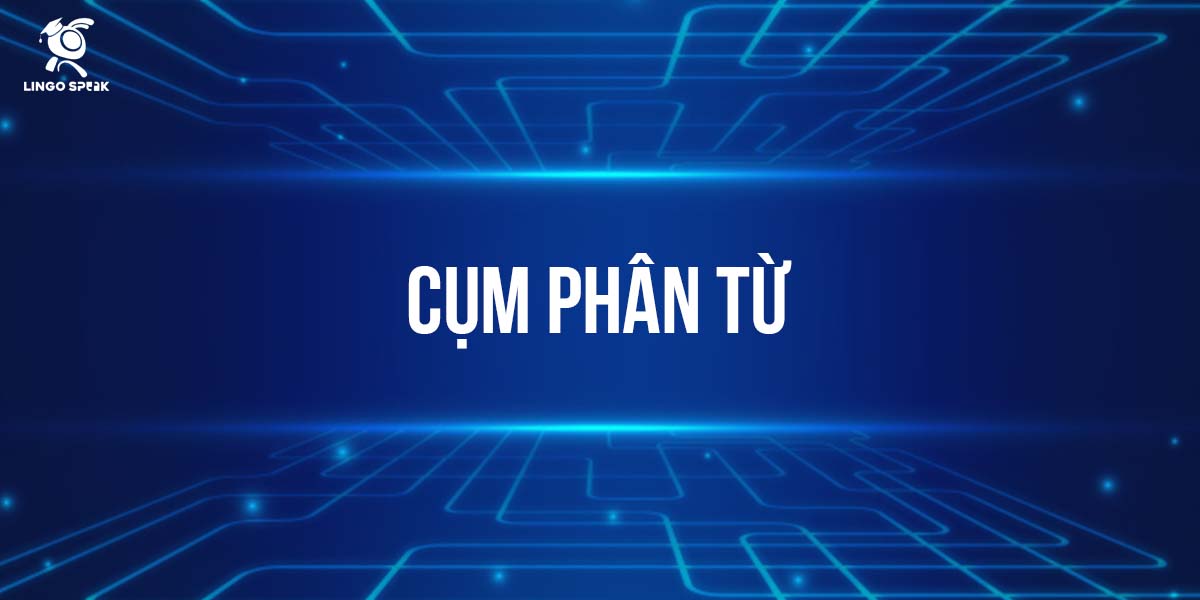Tiếp tục series các câu hỏi phỏng vấn tuyển dụng và công ty IT, đây là phần 2. Nếu các bạn chưa đọc phần 1 thì các bạn có thể đọc ở đây: 100 câu phỏng vấn tuyển dụng công ty IT part 1.
Sau đây là các câu hỏi phỏng vấn:
| What programming languages are you proficient in? | Các ngôn ngữ lập trình mà bạn thành thạo là gì? |
| Have you ever worked with cloud computing technologies? If so, which ones? | Bạn đã từng làm việc với các công nghệ điện toán đám mây chưa? Nếu có, bạn đã làm việc với loại công nghệ nào? |
| How do you ensure the security of the applications you develop? | Làm thế nào để bạn đảm bảo an ninh của các ứng dụng bạn phát triển? |
| What version control systems are you familiar with? | Bạn quen thuộc với các hệ thống kiểm soát phiên bản nào? |
| Describe your experience with Agile development methodologies. | Hãy mô tả kinh nghiệm của bạn với các phương pháp phát triển Agile. |
| Can you explain the difference between front-end and back-end development? | Bạn có thể giải thích sự khác biệt giữa phát triển front-end và back-end không? |
What programming languages are you proficient in?
Certainly! I am proficient in several programming languages, including:
Tôi thành thạo một số ngôn ngữ lập trình như sau:
- Python
- JavaScript
- Java
- C++
- SQL
- Python
- JavaScript
- Java
- C++
- SQL
These are the languages I have extensive experience with, and I’m confident in my ability to contribute effectively using them in various projects and tasks. Additionally, I’m always eager to learn and adapt to new technologies and programming languages as needed.
Đây là những ngôn ngữ mà tôi đã có kinh nghiệm sâu rộng và tôi tự tin vào khả năng của mình để đóng góp hiệu quả bằng chúng trong các dự án và nhiệm vụ khác nhau. Ngoài ra, tôi luôn sẵn lòng học hỏi và thích nghi với các công nghệ và ngôn ngữ lập trình mới khi cần thiết.
Have you ever worked with cloud computing technologies? If so, which ones?
Certainly, I have experience working with cloud computing technologies. In my previous role, I had the opportunity to utilize various cloud platforms such as Amazon Web Services (AWS), Microsoft Azure, and Google Cloud Platform (GCP). Specifically, I have worked on deploying applications, managing infrastructure, and implementing solutions using services like AWS EC2, S3, Lambda, Azure Virtual Machines, Blob Storage, and GCP Compute Engine. My experience with these platforms has equipped me with a strong understanding of cloud computing principles and the ability to adapt to different cloud environments as per project requirements.
Chắc chắn, tôi đã có kinh nghiệm làm việc với các công nghệ điện toán đám mây. Trong công việc trước đó của tôi, tôi đã có cơ hội sử dụng các nền tảng điện toán đám mây như Amazon Web Services (AWS), Microsoft Azure và Google Cloud Platform (GCP). Cụ thể, tôi đã làm việc trên việc triển khai ứng dụng, quản lý cơ sở hạ tầng và triển khai các giải pháp sử dụng các dịch vụ như AWS EC2, S3, Lambda, Azure Virtual Machines, Blob Storage và GCP Compute Engine. Kinh nghiệm của tôi với những nền tảng này đã trang bị cho tôi kiến thức sâu về các nguyên tắc của điện toán đám mây và khả năng thích nghi với các môi trường đám mây khác nhau theo yêu cầu của dự án.
How do you ensure the security of the applications you develop?
When it comes to ensuring the security of the applications I develop, I follow a comprehensive approach that encompasses several key practices:
Để đảm bảo an ninh của các ứng dụng mà tôi phát triển, tôi tuân thủ một phương pháp toàn diện bao gồm một số thực hành chính:
Secure Coding Practices: I adhere to secure coding standards and guidelines such as OWASP Top 10 to mitigate common vulnerabilities like injection attacks, cross-site scripting (XSS), and cross-site request forgery (CSRF).
Thực Hành Lập Trình An Toàn: Tôi tuân theo các tiêu chuẩn và hướng dẫn lập trình an toàn như OWASP Top 10 để giảm thiểu các lỗ hổng phổ biến như các cuộc tấn công injection, cross-site scripting (XSS), và cross-site request forgery (CSRF).
Authentication and Authorization: I implement robust authentication mechanisms such as multi-factor authentication (MFA) and use proper authorization controls to ensure that only authorized users can access sensitive functionality and data.
Xác Thực và Ủy Quyền: Tôi triển khai các cơ chế xác thực mạnh mẽ như xác thực đa yếu tố (MFA) và sử dụng các kiểm soát ủy quyền đúng đắn để đảm bảo chỉ có người dùng được ủy quyền mới có thể truy cập chức năng và dữ liệu nhạy cảm.
Data Encryption: I employ encryption techniques such as SSL/TLS for data transmission and encryption algorithms for sensitive data storage to prevent unauthorized access and data breaches.
Mã Hóa Dữ Liệu: Tôi sử dụng các kỹ thuật mã hóa như SSL/TLS cho việc truyền dữ liệu và thuật toán mã hóa cho việc lưu trữ dữ liệu nhạy cảm để ngăn chặn việc truy cập không ủy quyền và rò rỉ dữ liệu.
Input Validation: I validate and sanitize all user inputs to prevent injection attacks and other forms of malicious input that could compromise the security of the application.
Kiểm Tra Đầu Vào: Tôi kiểm tra và làm sạch tất cả các đầu vào từ người dùng để ngăn chặn các cuộc tấn công injection và các loại đầu vào độc hại khác có thể gây nguy hại cho an ninh của ứng dụng.
Security Testing: I conduct thorough security testing throughout the development lifecycle, including static code analysis, dynamic application security testing (DAST), and penetration testing, to identify and remediate security vulnerabilities proactively.
Kiểm Thử An Ninh: Tôi thực hiện kiểm thử an ninh toàn diện trong suốt vòng đời phát triển, bao gồm phân tích mã nguồn tĩnh, kiểm thử bảo mật ứng dụng động (DAST), và kiểm thử xâm nhập, để xác định và khắc phục các lỗ hổng bảo mật một cách tích cực.
Patch Management: I stay vigilant about security patches and updates for the libraries, frameworks, and third-party components used in the application, ensuring that known vulnerabilities are promptly addressed.
Quản Lý Patch: Tôi luôn chú ý đến các bản vá và cập nhật bảo mật cho các thư viện, framework, và các thành phần bên thứ ba được sử dụng trong ứng dụng, đảm bảo rằng các lỗ hổng đã biết được giải quyết kịp thời.
Secure Configuration: I configure servers, databases, and other components securely, following industry best practices and hardening guidelines to minimize the attack surface and mitigate potential security risks.
Cấu Hình An Toàn: Tôi cấu hình máy chủ, cơ sở dữ liệu, và các thành phần khác một cách an toàn, tuân thủ các tiêu chuẩn và hướng dẫn cứng rắn của ngành để giảm thiểu diện tích tấn công và giảm thiểu các rủi ro về an ninh tiềm ẩn.
Monitoring and Logging: I implement robust logging mechanisms and monitor system activity continuously to detect and respond to security incidents promptly. This includes implementing intrusion detection systems (IDS) and security information and event management (SIEM) solutions.
Theo Dõi và Ghi Nhật Ký: Tôi triển khai các cơ chế ghi nhật ký mạnh mẽ và theo dõi hoạt động hệ thống liên tục để phát hiện và phản ứng kịp thời với các sự cố an ninh. Điều này bao gồm triển khai hệ thống phát hiện xâm nhập (IDS) và giải pháp quản lý thông tin và sự kiện an ninh (SIEM).
Security Awareness Training: I believe in fostering a culture of security awareness among the development team by providing regular training and promoting best practices to mitigate human error and social engineering attacks.
Đào Tạo Nhận Thức An Ninh: Tôi tin rằng việc tạo ra một văn hóa nhận thức an ninh trong nhóm phát triển thông qua việc cung cấp đào tạo định kỳ và khuyến khích các thực hành tốt nhất là cách hiệu quả để giảm thiểu lỗi của con người và các cuộc tấn công kỹ thuật xã hội.
Overall, my approach to application security involves a combination of proactive measures, rigorous testing, and ongoing vigilance to ensure that the applications I develop are robustly protected against security threats.
Tổng thể, phương pháp của tôi đối với an ninh ứng dụng bao gồm sự kết hợp của các biện pháp tích cực, kiểm thử chặt chẽ và sự cảnh giác liên tục để đảm bảo rằng các ứng dụng tôi phát triển được bảo vệ mạnh mẽ trước các mối đe dọa an ninh.
What version control systems are you familiar with?
I am familiar with several version control systems, including Git, Subversion (SVN), and Mercurial. I have used Git extensively in both personal and professional projects, utilizing features such as branching, merging, and rebasing to manage code efficiently. Additionally, I have some experience with SVN and Mercurial, understanding the basics of versioning, committing changes, and resolving conflicts. I am adaptable to learning new version control systems as needed to suit the requirements of the projects I work on.
Tôi quen thuộc với một số hệ thống quản lý phiên bản, bao gồm Git, Subversion (SVN), và Mercurial. Tôi đã sử dụng Git rộng rãi trong cả dự án cá nhân và chuyên nghiệp, sử dụng các tính năng như nhánh, hợp nhất, và rebasing để quản lý mã nguồn một cách hiệu quả. Ngoài ra, tôi cũng có một ít kinh nghiệm với SVN và Mercurial, hiểu biết về cơ bản của việc quản lý phiên bản, commit thay đổi, và giải quyết xung đột. Tôi có khả năng thích ứng và học hỏi các hệ thống quản lý phiên bản mới khi cần thiết để phù hợp với yêu cầu của các dự án tôi tham gia.
Describe your experience with Agile development methodologies.
Certainly! I have significant experience with Agile development methodologies throughout my career. In my previous roles, I have actively participated in Agile ceremonies such as daily stand-up meetings, sprint planning, sprint reviews, and retrospectives. I am well-versed in Scrum, Kanban, and other Agile frameworks.
Tôi có kinh nghiệm đáng kể với các phương pháp phát triển Agile trong suốt sự nghiệp của mình. Trong các vai trò trước đó, tôi đã tích cực tham gia các buổi lễ Agile như họp triển khai hàng ngày, lập kế hoạch sprint, đánh giá sprint và tổ chức họp tổng kết. Tôi am hiểu về Scrum, Kanban và các framework Agile khác.
I have collaborated closely with cross-functional teams, including developers, designers, product managers, and quality assurance engineers, to deliver high-quality software products iteratively. I understand the importance of frequent communication, transparency, and adaptability in Agile projects.
Tôi đã hợp tác chặt chẽ với các nhóm chức năng chéo, bao gồm các nhà phát triển, nhà thiết kế, quản lý sản phẩm và kỹ sư đảm bảo chất lượng, để cung cấp các sản phẩm phần mềm chất lượng cao theo cách lặp lại. Tôi hiểu rõ về tầm quan trọng của việc giao tiếp thường xuyên, minh bạch và tính linh hoạt trong các dự án Agile.
I have also served in various roles within Agile teams, including Scrum Master and Product Owner, where I facilitated the Agile process, removed impediments, and prioritized backlog items based on business value and stakeholder feedback.
Tôi cũng đã phục vụ trong các vai trò khác nhau trong các nhóm Agile, bao gồm Scrum Master và Chủ sở hữu sản phẩm, nơi tôi đã tạo điều kiện cho quá trình Agile, loại bỏ các trở ngại và ưu tiên các mục trong backlog dựa trên giá trị kinh doanh và phản hồi từ bên liên quan.
Moreover, I continuously strive to improve our Agile processes by implementing best practices, conducting retrospectives, and incorporating feedback loops to enhance productivity and delivery efficiency.
Hơn nữa, tôi luôn cố gắng cải thiện các quy trình Agile của chúng tôi bằng cách triển khai các phương pháp tốt nhất, tổ chức các họp tổng kết và tích hợp các vòng phản hồi để tăng cường năng suất và hiệu quả giao hàng.
Overall, my experience with Agile methodologies has equipped me with the skills and mindset necessary to thrive in dynamic and collaborative software development environments.
Nói chung, kinh nghiệm của tôi với các phương pháp Agile đã trang bị cho tôi những kỹ năng và tư duy cần thiết để phát triển mạnh mẽ trong môi trường phát triển phần mềm động và hợp tác.
Can you explain the difference between front-end and back-end development?
Front-end and back-end development are two distinct aspects of building software applications, particularly in the realm of web development. Here’s a breakdown of the differences between the two:
Phát triển front-end và back-end là hai khía cạnh khác biệt của việc xây dựng ứng dụng phần mềm, đặc biệt là trong lĩnh vực phát triển web. Dưới đây là một phân tích về sự khác biệt giữa hai khía cạnh này:
Front-end Development:
- Front-end development refers to the part of a website or application that users interact with directly.
- It involves creating and implementing the visual elements, user interface (UI), and user experience (UX) design.
- Technologies commonly used in front-end development include HTML, CSS, and JavaScript.
- Front-end developers focus on ensuring that the website or application is visually appealing, easy to navigate, and responsive across different devices and screen sizes.
Phát triển Front-end:
- Phát triển front-end liên quan đến phần của một trang web hoặc ứng dụng mà người dùng tương tác trực tiếp.
- Nó bao gồm việc tạo ra và triển khai các yếu tố trực quan, giao diện người dùng (UI) và thiết kế trải nghiệm người dùng (UX).
- Các công nghệ thông thường được sử dụng trong front-end bao gồm HTML, CSS và JavaScript.
- Các nhà phát triển front-end tập trung vào việc đảm bảo rằng trang web hoặc ứng dụng có giao diện trực quan hấp dẫn, dễ sử dụng và phản hồi trên các thiết bị và kích thước màn hình khác nhau.
Back-end Development:
- Back-end development, on the other hand, deals with the server-side of the application.
- It involves working with databases, servers, and application logic that powers the front-end.
- Back-end developers are responsible for managing data, handling user authentication, and ensuring the smooth functioning of the application behind the scenes.
- Common technologies used in back-end development include programming languages like Python, Java, PHP, and frameworks like Django, Spring Boot, Laravel, etc.
Phát triển Back-end:
- Phát triển back-end, từ phía máy chủ của ứng dụng.
- Nó bao gồm làm việc với cơ sở dữ liệu, máy chủ và logic ứng dụng điều khiển phía trước.
- Các nhà phát triển back-end chịu trách nhiệm quản lý dữ liệu, xử lý xác thực người dùng và đảm bảo hoạt động mượt mà của ứng dụng ở phía sau cánh cửa.
- Công nghệ phổ biến được sử dụng trong phát triển back-end bao gồm các ngôn ngữ lập trình như Python, Java, PHP và các framework như Django, Spring Boot, Laravel, v.v.
In summary, while front-end development focuses on creating the user-facing interface and experience, back-end development deals with the server-side processes and functionality that enable the application to function properly. Both front-end and back-end development are essential components of building a successful web application.
Tóm lại, trong khi phát triển front-end tập trung vào việc tạo ra giao diện và trải nghiệm người dùng, phát triển back-end xử lý các quy trình và chức năng phía máy chủ giúp ứng dụng hoạt động đúng cách. Cả hai phát triển front-end và back-end đều là thành phần quan trọng của việc xây dựng một ứng dụng web thành công.



